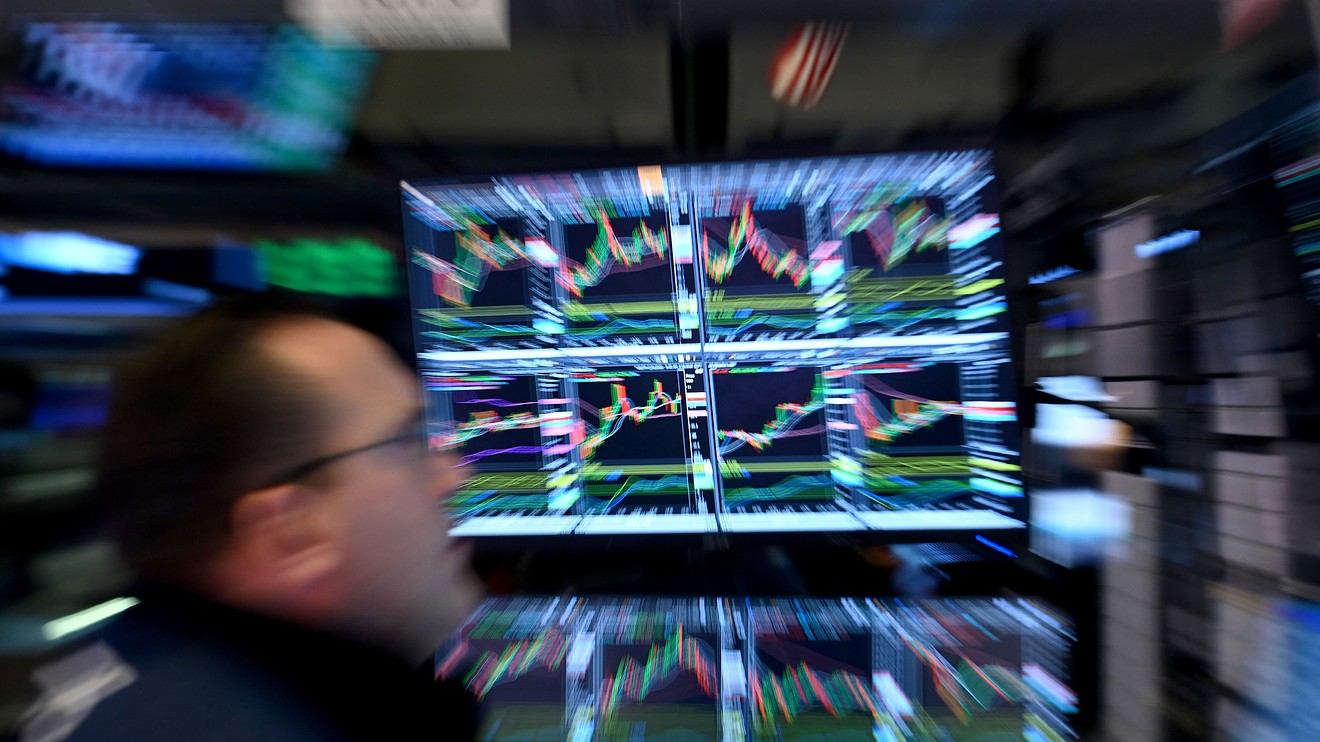
Investors are seeing light at the end of the tunnel after a brutal period. But is it an oncoming train?
It’s a question many investors are weighing as the market attempts a powerful rebound from its late-March lows on the back of signs that the spread of the coronavirus-borne disease COVID-19 could be slowing here and elsewhere in the world.
Some of the hardest-hit places in the U.S., where a quarter of all confirmed global cases have now been reported, are starting to show welcome signs of a reduction in infections, including New York state, which has emerged as the epicenter of the viral outbreak that began in Wuhan, China in December.
New York Gov. Andrew Cuomo, speaking during a news conference on Tuesday, said that the rate of hospitalizations is plateauing, even as he reported the biggest one-day rise in deaths.
Italy and Spain also have reported a slowdown in the outbreak following strict social-distancing and lockdown measures, and Austria and Denmark are setting the stage for a return to some semblance of normalcy. Wuhan, China, where the disease was first identified, reported no new deaths for the first time since January.
See:Vodka, saunas and resisting lockdown — the countries taking a different approach to the coronavirus
“We are finally seeing U.S. COVID-19 new case numbers responding to social distancing — certainly in New York state but also elsewhere,” wrote analysts at BofA Global Research in a note.
On top of that, central banks and governments across the globe are throwing out what amounts to trillions of dollars to help stanch the economic damage resulting from efforts to mitigate infections and treat those sickened by the illness derived from the novel strain of coronavirus.
Those factors have given a major boost to equities and momentarily deflated some of the rabid appetite for assets considered havens like the 10-year Treasury notes TMUBMUSD10Y, 0.714%. The 10-year yields about 0.78%, compared with 0.587% on Friday. Bond prices fall as yields rise.
And stocks, attempted strong gains Tuesday before ending lower, with the Dow Jones Industrial Average DJIA, -0.11% giving up a more than 930-point rally, after a dramatic surge on Monday saw the blue-chip index, along with the S&P 500 index SPX, -0.16% and the Nasdaq Composite Index COMP, -0.32%, close more than 7% higher.
See:Why skeptics believe a V-shaped Dow rebound remains unlikely to materialize
As of Tuesday, the Dow is already up 7.6% on the week (which is set to be abbreviated by a Good Friday market pause), the S&P 500 is 6.9% higher, and the Nasdaq is on pace for a gain of 7%. From recent lows on March 23, the Dow has risen about 19.4%, the S&P 500 is up roughly 17% and the Nasdaq has gained nearly 14.3%.
It has been an extraordinary move higher, and the rate of infections and the latest death tolls appear set to continue catalyzing market moves in the near term. Why? Because those data will signal when the economy, which has been mostly in shutdown mode since the pandemic took hold, could possibly resume.
The swing higher for stocks has created a degree of discord among experts about how this movement will ultimately play out for markets in the near term as investors process likely poor economic data and weak corporate earnings in the days ahead.
Some argue that the bottom has been put in, but others are worried that the market could retest its March lows.
The team at Wolfe Research, including chief investment strategist Chris Senyek, says it has remained bearish on the market, given the weak data outlook. The disease’s path, the team wrote in a Tuesday report, is an uncertain one, “and our sense [is] that incoming economic data [and first-quarter] earnings season will be very disappointing.”
“We don’t believe that the global COVID-19 crisis is out of the woods just yet,” wrote the Wolfe Research team, with its analysts adding that they worry about infections remaining “very high” and the possibility of re-acceleration in places including Louisiana and New Jersey.
“How bad will it ultimately get and when will overall new infection rates peak? We do not know — but, from an investment perspective, that’s the key point,” the team wrote. “We don’t believe that U.S. equity markets will find a sustainable bottom until the U.S. new infection rate definitively rolls over.”
Indeed, perceived improvements in the public health situation and in risk appetite may not justify current stock-market valuations for some bears, especially as corporate quarterly results are expected to provide an ugly reminder of the impact of the virus.
J.P.Morgan Chase & Co. JPM, +1.31% CEO Jamie Dimon warned on Monday said that earnings for the nation’s largest bank by assets will decline “meaningfully” in 2020 from last year’s $36.4 billion, citing the impact from coronavirus.
David Kostin, chief equity strategist at Goldman Sachs, estimated that dividends will be down 25% and buybacks, one of the key supports for the market over the past decade, will be off 50%. He told CNBC during a Tuesday interview that dividends are “becoming more prized.”
“From a sentiment angle, recent exceptional bounces suggest that investor sentiment is still in the denial phase, rather than in the phase of capitulation that paves the way for a new bull market,” wrote Peter van der Welle, multiasset strategist at Robeco.
Albert Edwards, global strategist at Société Générale, on Tuesday said that investor hopes may be tied to monetary and fiscal relief measures, but that their hopes could be misplaced: “This optimism is the legacy of a long bull market. Investors can’t conceive that the Fed will ‘allow’ the stock market to collapse,” the analysts tweeted on Tuesday, adding: “Think again.”
That said, Michael Wilson, Morgan Stanley’s chief equity strategist, said in a recent note that he believes the recent stock-market lows won’t be retested, even as he said he’s forecasting earnings to decline 20%. He said there will be value opportunities for investors.






